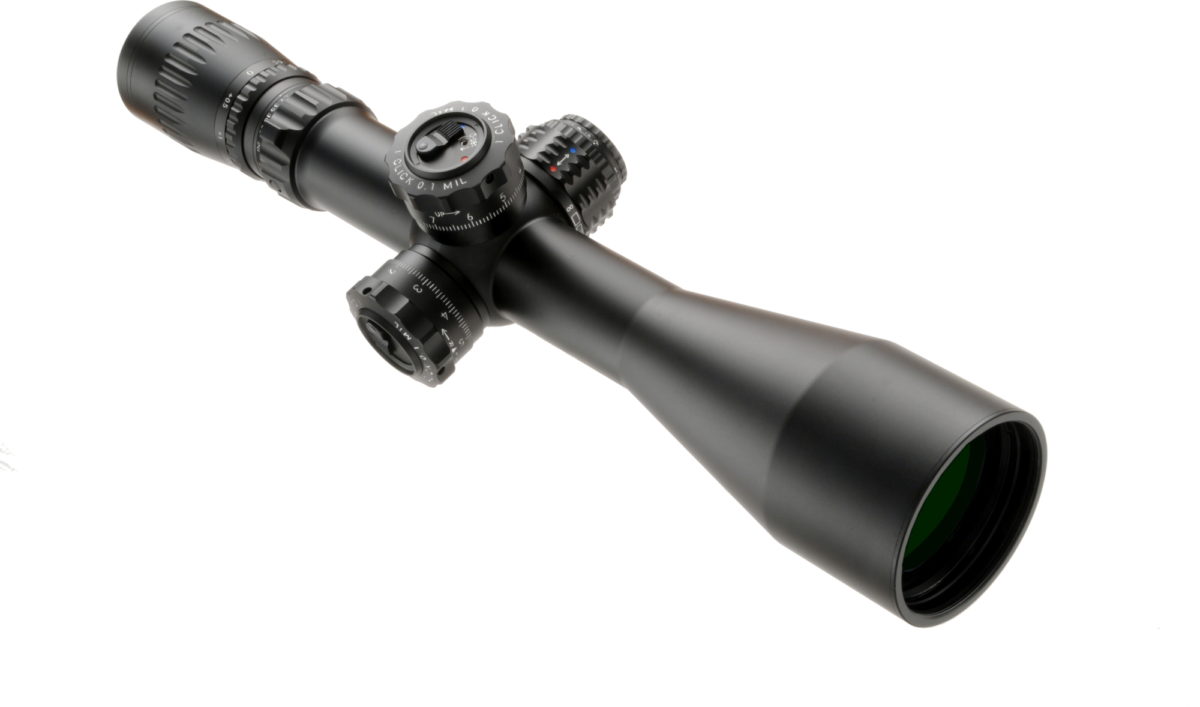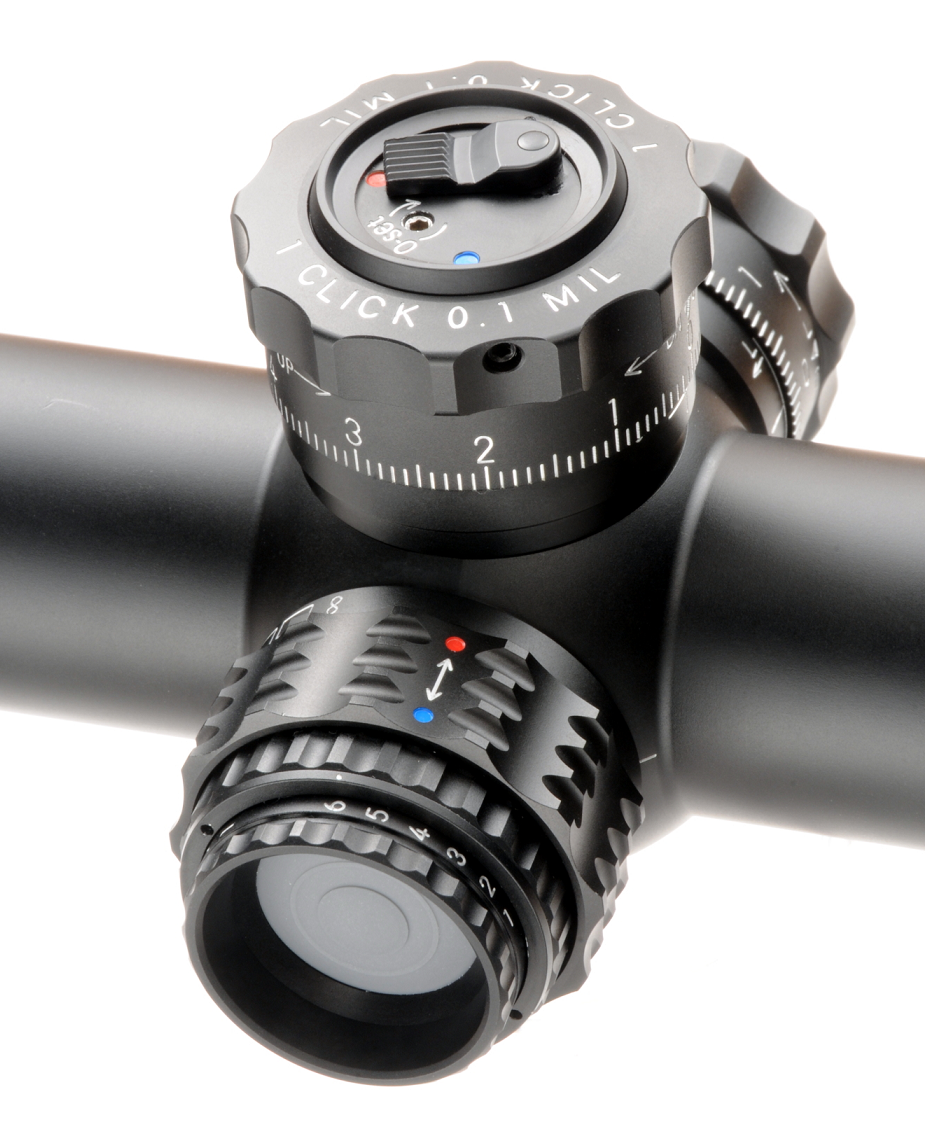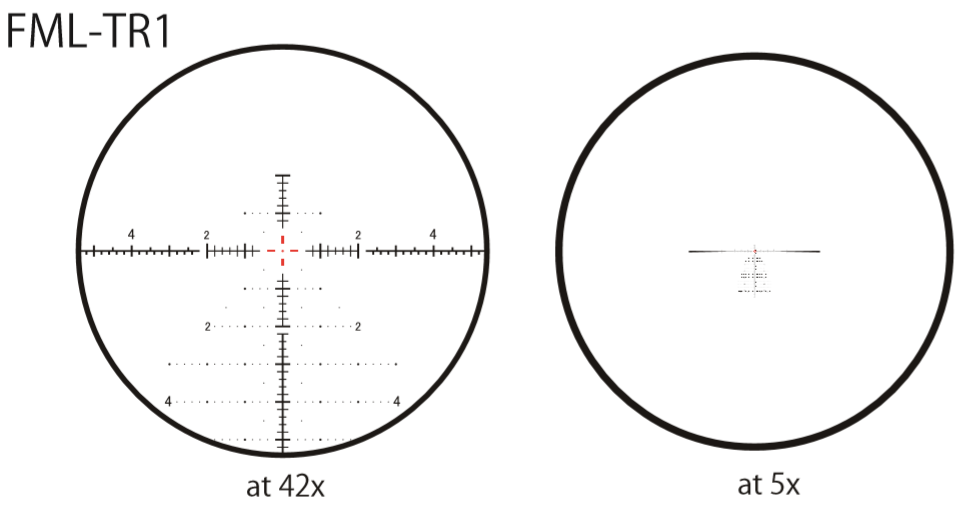News Category
Archive
Newly Posted
New March FFP 5-42×56 High Master FML-TR1 preliminary review – by Bill Meyer
Posted 03/25/2020
I call this a “preliminary” review because this New March FFP 5-42×56 High Master scope
is not yet available to the general market (slated to come out this April).
(*March Scopes are now accepting orders via distributors / dealers.)


First introduced at the 2019 SHOT Show it piqued my interest some because I had heard great things
about the “High Master” optical system and was anxious to see that technology make its way into March’s FFP scopes.
“What is High Master?” you ask, well you’re not alone, I have been trying to get the low down on this system
since I first heard the phrase come up a few years ago, without getting too techno geeky this is how it was explained to me:
“March High Master system involves a special 3 lens structure at the objective, a proprietary lens sandwiched between two Super-ED lenses.
The reason is they take care of some of the optical correction which generally appears further down the system within the scope.
This does result in a very different image. Much brighter and sharper…”
Okay, so maybe that was a bit techno geek so in a nutshell,
High Master (HM) is the term March is using for phenomenal optical performance!
Having had two March scopes previously (not HM) I can say that
March already had the most impressive optical performance I have seen come out of Japan,
so I have been really curious as to whether or not HM could compete with the best I’ve seen from Europe.
A lot of change has occurred with March since SHOT 2019.
Their previous model was to use only one distributor in the USA which usually meant one source/company,
so if you wanted to buy March there was only one place to go.
But last year March began to change that model and they now have multiple dealers all over the country
which I believe is a good thing and will help their name recognition here in the USA.
One disappointing feature of the 5-42×56 HM that was displayed in 2019 was the reticle,
it was not well received here on the Hide and specifically with competition oriented shooters.
However, that all changed late last year and March now has
a very viable .2 mil tree reticle which they’ve needed for a long time in their FFP scopes.
The first reticle in this series is called the “FML-TR1” and it hits most of the marks
that I look for in a modern Christmas tree reticle with .2 mil hash marks,
center dot and dots in the Christmas tree which does not obscure the image behind it.

Normally many of you enjoy my reviews as I focus a lot on the optical characteristics of a particular scope
and while I certainly intend to do just that, this will need to come over time as I only recently received the scope
and can only provide a cursory analysis but want to take more time to provide an in depth analysis
so keep watch of this thread as I will continue to update it as time goes on.
What I can say now, with the short time I’ve had the scope (less than a week), is the optics are quite impressive
and I’m telling you this with my current favorite scope being the Minox ZP5 5-25×56
which many consider (myself included) to be among the best optically speaking in the FFP scope world.
This is the scope I use to compare others to when it comes to optical performance.
With an 8.4x erector I expect there to be some compromises and will seek to flush those out in the days to come,
but I can say with confidence the 26* eyepiece is legit, the FOV is enormous for a long range scope
and what’s more impressive is the scope doesn’t appear to lose edge sharpness throughout the magnification range,
but again, more testing is needed for conclusive results.
What I was not prepared for was the new turrets that March is introducing with this scope.
For any of you who’ve read my reviews over the years you’ll know that I am not a turret purist, an optical purest yes,
but as long as the turrets landed on the right tick mark and provided adequate feedback I was usually pretty happy.
My past March scopes had what I would call “mushy” turrets,
but they landed accurately and gave enough audible and tactile feedback to get the job done.
I expected much the same with this new scope but was taken aback at just how good these new turrets are
– they are anything but mushy and provide what may be the most tactile feedback I’ve ever felt in a turret.
Previously Kahles had some of my favorite turrets with regard to tactile feedback, the ZCO turrets
maybe had an edge over Kahles (I’ve only spun TT turrets once so would need more time with them)
but the new March turrets best my experience with Kahles and ZCO.
Contributing to the feel is the spacing, while manufacturers seem to be pushing the limit with 15 and even 18 mil per turn turrets,
March kept their’s at 10 mil per rev, a wise choice I believe as each click is very distinct
and with adequate spacing between clicks that you don’t get lost thinking “did I just move one or two clicks?”.
Not only are they very tactile, they also have a unique locking system which can be seen in the images below.
I’ve previously used the Vortex AMG, the Schmidt & Bender locking turrets
and the ZCO locking turrets (oh, and the Tract as well) and this, I think, will prove to be my favorite design.
All the aforementioned designs have a “lift to release, push down to lock” turret housing that rises and falls,
but March decided to place a lever at the top of the turret (also on the windage as well) with a blue dot for unlock and a red dot for lock,
this lever can easily be manipulated in the dark but what I like most about it is that you can choose to turn it off
and the turrets spin freely without having to worry if you need to lift up or push back down,
and when you don’t want them to move you flip the lever and they lock solid – no play whatsoever,
and speaking of play, I cannot find any appreciable amount of play when turning.
Solid, distinct, audible and with adequate spacing – these turrets I am sure will become a hit among the community.
My only area of criticism is the zero stop, this is set by a hex key at the very top of the elevation turret
in between the lock/unlock dots and you simply turn CW to lock; however, the turret only gets more difficult
to turn at the 0-set point, but given enough effort and you can turn past the point you’ve set the lock,
time will tell whether this becomes an issue or not, especially for competition shooters.
Another recommendation I would make is to put the hex key position under one of the lock/unlock sides
so that the key slot is covered by the lever… drop your scope in the mud and
you may find it very difficult to clean out the slot leading to the hex nut.

You may also notice in the image above that the parallax knob has
what appears to be a blue dot and a red dot and yes, you guessed it, the parallax is also locking.
I’ve never felt that I’ve needed a locking parallax before, but it will be interesting to see if this design proves useful over time.
The illumination is also different from past March models,
instead of pressing the center button to move through different magnification settings,
you push to turn on/off and using the outer ring to twist to different settings which I much prefer over strictly push button.

The ergonomics of this scope play out very well, at just over 14″ long
it is considerably shorter than the scope it was aimed to compete against – the Schmidt & Bender PM II 5-45×56.
In fact, it is shorter than many 5-25 scopes and with the wide angle eyepiece has even greater FOV
than the venerated TT525P and Minox ZP5 all the while providing 17x more magnification on the top end.
Another feature that sets it apart from the Schmidt 5-45 is the parallax goes down to 10 yards
making this a very viable option for many rimfire rigs out there – serious NRL22 competitors should take notice.

I had a bunch of load development to do on the day I went out so had the opportunity to use it at 100 for sight in
and at 300 for my LD work, I did notice that the parallax/focus was a bit finicky which is not too surprising
given the 8.4x and shorter body design, but the parallax was easy to set and had the right amount of tension.
The mag ring is a bit tighter and would benefit some with a throw lever.
The diopter is a fast focus design with a lock ring and initial setup was easier
than some other scopes that I’ve had to play around with more to get just right.
If anyone has any specific questions, or has something you’d like me to test in the field,
please let me know and I will do my best to accommodate.
In shooting the March 5-42×56 HM side by side with my Minox ZP5 5-25×56 I really enjoyed shooting with the March,
in fact, I found myself enjoying the FML-TR1 reticle more than my favorite – the MR4.
The thicker center cross and dot made acquiring the target “easier”…
it might just be my older eyes but I’ve found the thinner reticles are harder for me to pickup




For size comparison, here’s a top view showing the size difference the 5-42 HM has over the ZP5 5-25

▲Top:ZP5 5-25
Below: March 5-42 High Master
Bill Meyer
Colorado, USA
March, 2020
